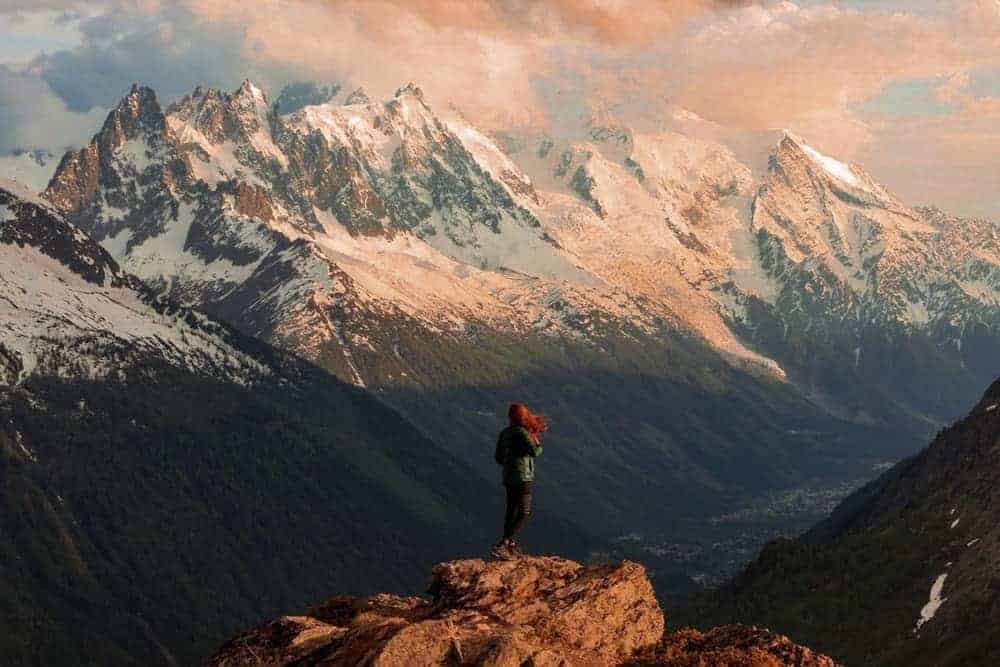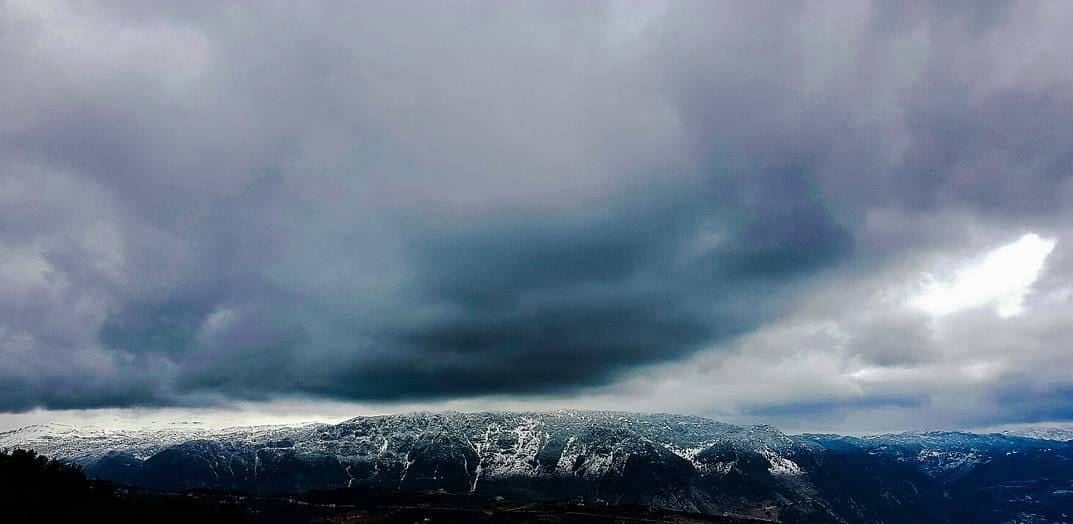 Survival protocol generally taught on wilderness survival courses states that you should stay where you are if you’re lost in the wilderness. But is that always the best decision?
Survival protocol generally taught on wilderness survival courses states that you should stay where you are if you’re lost in the wilderness. But is that always the best decision?
It depends on a whole host of factors, the terrain you’re in…and what dangers are present or expected (like a change in the weather / temperature etc), as well as what items you have with you at the time.
If you’re badly injured and unable to walk (non-ambulatory), then the decision pretty much makes itself.
However, if you aren’t seriously injured and are able to walk out, then this may well be a better option for someone who’s lost – but, again, this does depend on a number of factors.
So, imagine you’re lost in the wilderness. Instead of heading off to try to reach safety, in many situations, staying put can be the best thing you can do.
After all, there’s no guarantee that you’ll be able to find anywhere better around the next corner or two.
As a rule, if you don’t know where you are and don’t have any idea in which direction you need to travel, or even how to provide for yourself in the bush…then staying where you are is probably the safest option.
Additionally, if you’re travelling in a vehicle when you become totally lost, then it also makes a lot of sense to stay with the vehicle.
 Even if the vehicle has broken down – it still provides essential shelter from the harsh elements, as well as having countless items on it that can be repurposed to help in a survival situation.
Even if the vehicle has broken down – it still provides essential shelter from the harsh elements, as well as having countless items on it that can be repurposed to help in a survival situation.
On top of this, it also makes the task of SAR (search and rescue) a lot easier to spot you compared to a lone person walking through dense undergrowth.
If you told people about the route you were taking, the chances are they’ll start searching for you shortly after you miss the expected time of you return at a particular destination.
After all, if you head off in a different direction, they might not find you or be able to rescue you.
If you decide to stay, then you’ll need certain elements to enable you to survive in the field. Elements such as building an adequate shelter, as you may be there a few days before you’re rescued (just one of the things we teach on our courses here at SCT).
Aside from other critical priorities like finding a sustainable source of potable water, lighting a fire and searching for food – you will need to rely heavily on rescue signals, signalling any search teams looking for you by land, sea or air.
However, even though staying put is often a good choice, sometimes heading off proves to be the better option – especially if you find yourself in a dangerous location, or you have a general idea of the direction you need to travel.
Before You Go
Here are some important factors to consider before heading off:
- Do you have a good idea of which direction you need to travel in to reach safety and how you’re going to get there?
- Do you know approximately how far the journey is likely to be?
- Do you have enough / the right equipment and supplies to make that journey in the terrain you’re in / conditions?
- Is the terrain you’re in particularly difficult to cover / cross (making your journey that much harder)?
- Is it more dangerous where you are now or where you are travelling to?
- Does your current location already tick off many of the ‘Top 5 Survival Priorities,’ such as shelter, water, fire (i.e. does it have lots of resources you can use as tinder, kindling, and for fuel wood), and food?
Make sure you only head off when you are absolutely ready to and have weighed up all of the factors you can think of.
Remember, in the real world – it’s never going to be a perfect plan…and plans in the field need to be flexible and dynamic.
But, make sure you think through every scenario possible and try to visualise what you might do if things don’t go to plan.
Another critical factor to consider is the climate and the short-term weather conditions, which will affect you on your hike out of there. This part is vitally important!
If a severe storm looks threatening in the distance, then it’s safer to stay where you are. The majority of bad storms come and go fairly quickly.
Travelling in heavy rain or a driving snow blizzard with poor waterproof clothing is almost guaranteed to give you hypothermia (exposure), which can easily become a life-or-death situation.
And, again, before you head off, set up rescue signals to tell anyone who’s looking for you or happens upon your shelter where you were last and in which direction you travelled.
You can also leave a note or a marker. The more details you can leave before you go, the better chance they’ll have of finding you.
It can even be quite detailed if you have the means to do this, such as telling them what equipment and supplies you have with you and the current condition of your health.
Ensure you stock up on water and food, and repair anything like protective clothing and prepare other key equipment you think you’ll need, such as sharpening your survival knife etc.
Take signalling and fire-lighting gear with you (on one of our wilderness survival courses at SCT, we specifically teach you how to make char cloth to carry with you for repeat fire lighting!).
Take particularly good care of your mental health (keep your spirits up) and your physical wellbeing. In particular, take good care of your hands and your feet.
Always take extra socks with you anyway (as they’re useful for so many things), and change your socks regularly, avoid travelling in wet socks or boots, and dry your feet off each night by taking your boots and socks off.
Don’t Rush Or Push Too Hard
Travelling in a survival situation is a completely different beast than travelling for fun. The stakes are ultimately much higher, so you cannot afford to make mistakes.
Understand that your rate of travel will be much slower than in a normal situation. Move deliberately, carefully and at a steady pace. It’s not a race.
The faster you go, the greater the probability you’ll get hurt. You’re also much more likely to miss a potential shelter for the night, or walk straight passed a trail that might lead you to safety, or a water source etc.
Instead, if you walk at a slow and steady pace, you’ll stand a better chance of noticing those key opportunities that might make all the difference to your chances of survival.
While you’re travelling, it’s a good idea to look backwards regularly to see where you’ve been, so you can pick up on natural markers / landmarks etc when you’re facing in that direction if you have to go back.
This is not something that many people do naturally or remember to do when the adrenaline’s pumping…but it’s a good discipline to get in the habit of doing, and is unlikely to be taught on most wilderness survival courses.
Most importantly, know the direction that you are heading in and set realistic travel goals. Don’t try to set goals that are unachievable in that terrain.
Select a destination that you know you can reach without physically tiring yourself out. Survival psychology is often about making easily achievable goals and then ticking them off mentally.
On the flip side, it can be the start to a downward spiral if you set goals that you then don’t achieve.
Moving At Night
Hiking at night is a risky undertaking and one that is generally not recommended. Quite simply, there are any number of risk factors that you just can’t see at night, such as stepping on a venomous creature, or tripping over a rock on the ground, or – worse – fall off a cliff.
The only real exception to this rule, is when you’re travelling in the desert. Where daytime temperatures are too high to allow safe travel, it can sometimes be the better option to move at night.
Due to the low rainfall in most deserts and low humidity levels, ideally you can use the moonlight to help you see where you’re stepping (assuming there’s a moon out).
There are still venomous creatures to think about, but it beats the very real risk of dehydration and heatstroke that’s almost certain during the far hotter day temperatures.
However, SAR are unlikely to find you if you’re moving at night and resting up during the day, as you will presumably be sheltering underneath an overhanging rock feature, or in the shade of a large bush or tree etc and therefore be hidden.
Overview
When it comes to a wilderness survival situation, there is no average emergency. Every crisis is unique.
Certain factors such as the location, the topography, the weather, and the individual set of circumstances combine to create a situation that has never happened before and will likely never occur again.
 However, in the face of so many variables – there are a few constants. Hypothermia from exposure to the cold (or immersion in cold water) can kill you faster than dehydration. Lack of water can kill you much faster than starvation.
However, in the face of so many variables – there are a few constants. Hypothermia from exposure to the cold (or immersion in cold water) can kill you faster than dehydration. Lack of water can kill you much faster than starvation.
And panicking can quickly lead to the worst decision of your life! There’s a lot of factors to think about when making the best decision at the time, but we can learn from the successes and failures of others.
We can learn from the experience of others in a similar situation and take that learning to predict potential challenges and solutions for many varied situations.
While they may not keep you alive in the same way that shelter and water do, a positive attitude and mental toughness can, literally, save your life under the highly stressful circumstances of a survival situation.
Another aspect that we teach at SCT on our wilderness survival courses, is survival psychology – where having a positive state of mind means that you’re more likely to think clearly and make good decisions.
This, in turn, will naturally allow you to cope with the harsh conditions better and do what needs to be done to make it out alive.
Normally, you would opt to stay put in a survival scenario, construct a natural shelter, light a big fire, and wait for the search and rescue team to find you.
Alternatively, situations dictate that you take a different approach, and that is to make your way out of the wilderness while you still have the energy.
Usually, if you’re reasonably healthy, this occurs within the first week of being lost in the wild while you still have some energy reserves etc left…remembering that you still need to prioritise shelter and water well before a week is up.
How do you decide when to stay or go looking for help?
The first factor in the decision-making process is mobility (being able to move). If you’ve been injured in the wilderness and cannot move, the decision’s been made for you.
Stay put, and signal for help the very best you can. Use signal mirrors (or repurpose things like a car mirror, a phone screen, something highly reflective), brightly coloured emergency blankets / bandanas, smoke that’s in contrast to the background colour, wood or rocks to create an ‘SOS’ or ‘HELP’).
If you are mobile, however, you have more choices. If you know the direction you need to head in to find help, there are numerous ways to improvise a compass. Always keep on going that little bit further. Never give up.
The second major determining factor in self-rescue is whether anyone knows where you are when you’re due to get back.
If you’ve done the smart thing before leaving home and told someone exactly where you are going and when you’ll be back, then you can expect some kind of help when you don’t make it back in time.
In that scenario – stay put, build or find a shelter, put out your rescue signals, and wait for help.
But if you are lost in the wilderness, and no one knows where you are, then no one knows where to start their search.
Any rescue you happen upon is just pure luck, and you should never rely on luck to be on your side.
If no one knows where you are, and you can move, you need to self-rescue while you still have the mental energy and the physical strength.
That period of a week is also, often, the time period when the largest number of SAR personnel are searching for a survivor.
After a week, that number drastically reduces. So, make smart decisions, look at getting some proper training on wilderness survival courses, and stay safe out there.
For more of our survival and bushcraft blogs, click here.
